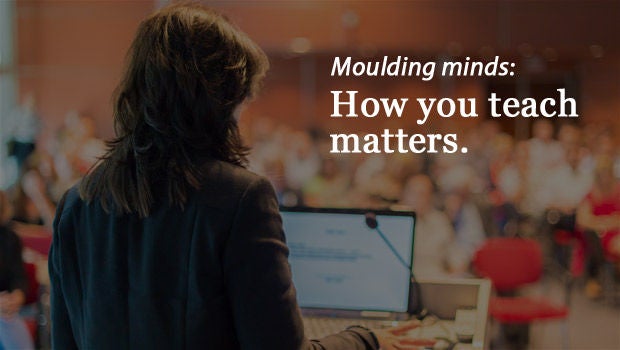
Curriculum, pedagogy, assessment strategies and faculty training all play a part in delivering medical education that produces critical thinkers and problem solvers.
Imagine you are scheduled to teach a one-hour class with 30 medical students. You have two options: deliver a lecture filled with the latest facts, figures and developments in your specialty or design a case study and let the students discuss it in teams, under your guidance.
Which would you choose?
According to Professor Janet Hafler, Yale School of Medicine’s Associate Dean for Educational Scholarship, your teaching strategy influences the way your students approach clinical challenges. What kind of doctors do you hope to produce?
“Critical thinking, clinical reasoning and problem solving skills are what doctors today and in the future need,” asserts Prof Hafler.
“There is an enormous amount of knowledge, with more generated every day, that is available and easily accessible in medicine. When doctors encounter a condition which they have never seen, their ability to critically think through the problem using data to devise innovative treatment plans becomes paramount.”
For example, in the 1970s, a group of clinicians and scientists found a virus they had never seen before. They flew to Africa, where the sample was from, and spent months interviewing locals in the midst of an outbreak, gathering data and mapping the spread of the mysterious disease. They discovered what was later named the Ebola virus. Without the ability to critically assess the problem they had at hand, they would not have delved deeper, discovered the disease, or developed strategies to help halt the spread.
| “Whether you’re a pathologist investigating a biopsy sample, a physician examining a patient, or a surgeon doing a procedure, critical thinking is a core skill. It enables you to notice trends, uncover insights and evaluate issues thoroughly to arrive at solutions.” - Prof Janet Hafler |
Prof Hafler emphasises that critical thinking is not just a skill required for researchers discovering new diseases and cures. “Whether you’re a pathologist investigating a biopsy sample, a physician examining a patient, or a surgeon doing a procedure, critical thinking is a core skill. It enables you to notice trends, uncover insights and evaluate issues thoroughly to arrive at solutions.”
Prof Hafler, who heads the Yale School of Medicine Teaching and Learning Centre, feels that an effective clinical education involves a well-structured formal curriculum as well as a good “hidden curriculum” that students will experience through active participation and observation.
“Concepts taught in the classroom provide students with an intellectual understanding of issues. Take handwashing, for example. During ward rounds, if a student observes that the attending physician did not wash her hands in-between examining different patients, it can be a point brought up for discussion. This is where learning really takes place: how should a junior doctor approach this issue? Should this behaviour be deemed as acceptable? What are the implications?” explains Prof Hafler, who has written extensively on the topic of the hidden curriculum.
“In this case, students should not think of it as challenging the authority or anyone’s personal beliefs or ideas, but as a means of relating to the the data, literature and evidence pertaining to infection control,” explains Prof Hafler. “For real holistic learning to happen, we should create a safe environment for students to make mistakes, encourage them to speak up and contribute to the group learning process.”
To facilitate this way of learning, Prof Hafler, who trains physicians to become more effective teachers, feels that support for the faculty’s educational contribution, such as faculty training and involvement in curriculum design is crucial.
As young doctors grapple with rapid changes in science and technology, faster and easier access to information, and continually evolving disease patterns,, how will you make the most out of that one-hour session with your students?














 Get it on Google Play
Get it on Google Play